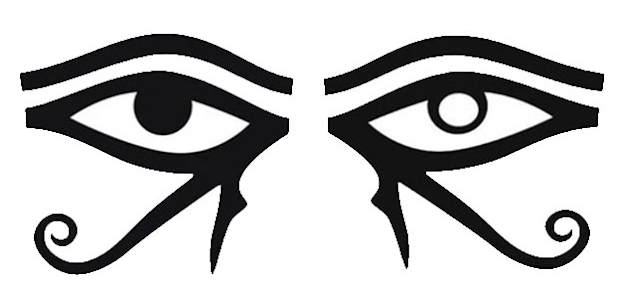2024年4月17日水曜日
https://jyado.blogspot.com/2024/04/toc_17.html贖罪の時間だゾ☆ 今回、十字架にかかるのは神の子ではなく数十億人の地球のTOC認定済侵略的宇宙知的生命体の諸君、君たちだ!
2024年4月17日水曜日
アニメ『黒執事II』にてオープニングテーマを担当されたthe GazettEのベース REITA様のご逝去
https://jyado.blogspot.com/2024/04/iithe-gazette-reita.html
Shortbread or shortie[1] is a traditional Scottish biscuit usually made from one part white sugar, two parts butter, and three to four parts plain wheat flour. Shortbread does not contain any leavening, such as baking powder or baking soda. Shortbread is widely associated with Christmas and Hogmanay festivities in Scotland, and some Scottish brands are exported around the world.
History[edit]
Shortbread originated in Scotland.[2][3] Although it was prepared during much of the 12th century, and probably benefited from cultural exchange with French pastry chefs during the Auld Alliance between France and Scotland,[4] the refinement of shortbread is popularly credited to Mary, Queen of Scots in the 16th century.[5] Despite the enduring popular association, evidence for any connection between Mary and shortbread's origin is sparse.[6]
Triangular wedges of shortbread became known as "petticoat tails", and this form of shortbread has become particularly associated with Mary, Queen of Scots.[7] It has been suggested that a French term for the wedges of shortbread was petits gâteaux or petites gatelles – little cakes, and this became "petticoat tails". It is now thought the Scots term derives from the decorated round edge of the segments which resemble petticoats.[8]
The first printed recipe, in 1736, was from a Scotswoman named Mrs McLintock.[9]
Shortbread was expensive and reserved as a luxury for special occasions such as Christmas, Hogmanay (Scottish New Year's Eve), and weddings. In Scotland, it was traditional to break a decorated shortbread cake (infar-cake or dreaming bread) over the head of a new bride on the entrance of her new house.[10][11][12] Shortbread was also given as a gift.[4]
Shortbread is commonly formed into one of three shapes:one large circle, which is divided into segments as soon as it is taken out of the oven (petticoat tails, which may have been named from the French petits cotés, a pointed biscuit eaten with wine, or petites gastelles, the old French term for little cakes. This term may also reference the shape of a petticoat[4]);
individual round biscuits (shortbread rounds);or
a thick (¾" or 2 cm) oblong slab cut into fingers.
Shortbread may also be made in farls.
In one of the oldest shapes, bakers pinched the edges of a shortbread round to suggest the rays of the sun.[4]
The stiff dough retains its shape well during cooking. The biscuits are often patterned before cooking, usually with the tines of a fork or with a springerle-type mold. Shortbread is sometimes shaped into hearts and other shapes for special occasions.
Cultural associations[edit]
In ancient Scottish folklore, sun-shaped cakes, such as shortbread, had magic powers over the Sun during the Scottish New Year's Eve.[4]
Shortbread is generally associated with and originated in Scotland, but due to its popularity it is also made in the rest of the United Kingdom, and similar biscuits are also made in Denmark, Ireland and Sweden. The Scottish version is the best-known, and is widely exported.
Scottish chef John Quigley, of Glasgow's Red Onion, describes shortbread as "the jewel in the crown" of Scottish baking.[22]
An early variety of shortbread, using ginger, was reportedly eaten during sittings of the Parliament of Scotland, and therefore the variety was sometimes called "Parliament cake" or "Parlies" into the 19th century.[23][24] The biscuits were sold in Mrs Flockhart's tavern and shop in Bristo Street in Edinburgh's Potterrow. Known as Luckie Fykie, the landlady was thought to be the inspiration for Mrs Flockhart in Walter Scott's Waverley.[25][26]
In the UK tax code, shortbread is taxed as a flour confection (baked good) rather than as a common biscuit.[4]
➡French petits cotés
➡On 15 April 2019
➡similar biscuits are also made in Denmark, Ireland and Sweden.
2024年4月17日水曜日
➡"the jewel in the crown"
2024年4月16日火曜日
MORIZO(モリゾウ)、「マクドナルド」で“金色のカローラ”引き当て大喜び
トヨタ会長、マック「ハッピーセット」で“金色のカローラ”引き当て大喜び「無邪気な子どもみたい」
2024年4月16日 9時53分
https://news.livedoor.com/article/detail/26237448/トヨタカローラは英語で何といいますか?
カローラは、英語「corolla」で花の中の最も美しい部分「花の冠」という意味です。2020/03/24あはは!マジ喜んでる!だったりするわけで。タナトスさんは何でも知っている。(爆wwwwwwwhttps://jyado.blogspot.com/2024/04/morizo.html
、、、(爆wwwwwwwwwww







Stonehaven Fireballs
返信削除In Stonehaven they really turn up the heat at New Year! One of many winter fire festivals unique to Scotland, the Stonehaven Fireballs parade in Aberdeenshire is a powerful spectacle to behold. It's a free Hogmanay event which has been celebrated for over 100 years and it always attracts a large crowd.
Traditionally, it was a cleansing ritual to burn off any bad spirits left from the old year so that the New Year can begin clean and purified. Watch in awe as the piper leads the procession marching down the street just before midnight as they swing balls of fire above their head in the ultimate test of skill for Stonehaven Hogmanay
・・・爆